4-Hydroxybutanoic acid sodium salt
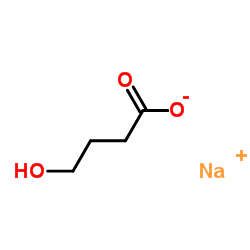
4-Hydroxybutanoic acid sodium salt structure
|
Common Name | 4-Hydroxybutanoic acid sodium salt | ||
|---|---|---|---|---|
| CAS Number | 502-85-2 | Molecular Weight | 126.086 | |
| Density | N/A | Boiling Point | 295.6ºC at 760mmHg | |
| Molecular Formula | C4H8NaO3+ | Melting Point | 145-146ºC | |
| MSDS | N/A | Flash Point | 146.8ºC | |
| Symbol |



GHS02, GHS06, GHS08 |
Signal Word | Danger | |
| Name | .γ.-Hydroxybutyric acid monosodium salt |
|---|---|
| Synonym | More Synonyms |
| Boiling Point | 295.6ºC at 760mmHg |
|---|---|
| Melting Point | 145-146ºC |
| Molecular Formula | C4H8NaO3+ |
| Molecular Weight | 126.086 |
| Flash Point | 146.8ºC |
| Exact Mass | 126.029289 |
| PSA | 57.53000 |
| Storage condition | Controlled Substance, -20?C Freezer |
Synonym:Sodium Oxybat Section 2 - COMPOSITION, INFORMATION ON INGREDIENTS
Risk Phrases: None Listed. Section 3 - HAZARDS IDENTIFICATION EMERGENCY OVERVIEW
Not available. Potential Health Effects Eye: No information regarding eye irritation and other potential effects was found. Skin: No information regarding skin irritation and other potential effects was found. Ingestion: Ingestion of large amounts may cause gastrointestinal irritation. Inhalation: Inhalation of dust may cause respiratory tract irritation. Chronic: Not available. Section 4 - FIRST AID MEASURES Eyes: Flush eyes with plenty of water for at least 15 minutes, occasionally lifting the upper and lower eyelids. Get medical aid immediately. Skin: Get medical aid immediately. Flush skin with plenty of water for at least 15 minutes while removing contaminated clothing and shoes. Ingestion: If victim is conscious and alert, give 2-4 cupfuls of milk or water. Never give anything by mouth to an unconscious person. Get medical aid immediately. Inhalation: Get medical aid immediately. Remove from exposure and move to fresh air immediately. If not breathing, give artificial respiration. If breathing is difficult, give oxygen. Notes to Physician: Section 5 - FIRE FIGHTING MEASURES General Information: As in any fire, wear a self-contained breathing apparatus in pressure-demand, MSHA/NIOSH (approved or equivalent), and full protective gear. Extinguishing Media: Use water fog, dry chemical, carbon dioxide, or regular foam. Section 6 - ACCIDENTAL RELEASE MEASURES General Information: Use proper personal protective equipment as indicated in Section 8. Spills/Leaks: Sweep up or absorb material, then place into a suitable clean, dry, closed container for disposal. Section 7 - HANDLING and STORAGE Handling: Wash thoroughly after handling. Use only in a well-ventilated area. Avoid contact with eyes, skin, and clothing. Avoid ingestion and inhalation. Storage: Store in a cool, dry place. Keep container closed when not in use. Section 8 - EXPOSURE CONTROLS, PERSONAL PROTECTION Engineering Controls: Use adequate ventilation to keep airborne concentrations low. Exposure Limits CAS# 502-85-2: Personal Protective Equipment Eyes: Wear appropriate protective eyeglasses or chemical safety goggles as described by OSHA's eye and face protection regulations in 29 CFR 1910.133 or European Standard EN166. Skin: Wear appropriate protective gloves to prevent skin exposure. Clothing: Wear appropriate protective clothing to prevent skin exposure. Respirators: Follow the OSHA respirator regulations found in 29 CFR 1910.134 or European Standard EN 149. Use a NIOSH/MSHA or European Standard EN 149 approved respirator if exposure limits are exceeded or if irritation or other symptoms are experienced. Section 9 - PHYSICAL AND CHEMICAL PROPERTIES Physical State: Powder Color: white to off-white Odor: None reported. pH: Not available. Vapor Pressure: Not available. Viscosity: Not available. Boiling Point: @ 760.00mm Hg Freezing/Melting Point: 144 - 148 deg C Autoignition Temperature: Not available. Flash Point: Not available. Explosion Limits, lower: Not available. Explosion Limits, upper: Not available. Decomposition Temperature: Solubility in water: soluble Specific Gravity/Density: Molecular Formula: C4H7O3Na Molecular Weight: 126.09 Section 10 - STABILITY AND REACTIVITY Chemical Stability: Stable under normal temperatures and pressures. Conditions to Avoid: Not available. Incompatibilities with Other Materials: Strong oxidizing agents. Hazardous Decomposition Products: Carbon monoxide, carbon dioxide, sodium oxide. Hazardous Polymerization: Has not been reported. Section 11 - TOXICOLOGICAL INFORMATION RTECS#: CAS# 502-85-2: ET4750000 LD50/LC50: CAS# 502-85-2: Oral, mouse: LD50 = 4250 mg/kg; Oral, rat: LD50 = 9690 mg/kg. Carcinogenicity: 4-Hydroxybutyric Acid, Sodium Salt - Not listed by ACGIH, IARC, or NTP. Other: See actual entry in RTECS for complete information. Section 12 - ECOLOGICAL INFORMATION Section 13 - DISPOSAL CONSIDERATIONS Dispose of in a manner consistent with federal, state, and local regulations. Section 14 - TRANSPORT INFORMATION IATA Not regulated as a hazardous material. IMO Not regulated as a hazardous material. RID/ADR Not regulated as a hazardous material. Section 15 - REGULATORY INFORMATION European/International Regulations European Labeling in Accordance with EC Directives Hazard Symbols: Not available. Risk Phrases: Safety Phrases: S 24/25 Avoid contact with skin and eyes. WGK (Water Danger/Protection) CAS# 502-85-2: No information available. Canada CAS# 502-85-2 is listed on Canada's NDSL List. CAS# 502-85-2 is not listed on Canada's Ingredient Disclosure List. US FEDERAL TSCA CAS# 502-85-2 is listed on the TSCA inventory. SECTION 16 - ADDITIONAL INFORMATION N/A |
CHEMICAL IDENTIFICATION
HEALTH HAZARD DATAACUTE TOXICITY DATA
|
| Symbol |



GHS02, GHS06, GHS08 |
|---|---|
| Signal Word | Danger |
| Hazard Statements | H225-H301 + H311 + H331-H370 |
| Precautionary Statements | P210-P260-P280-P301 + P310-P311 |
| Hazard Codes | F,T |
| Risk Phrases | 11-23/24/25-39/23/24/25 |
| Safety Phrases | S24/25 |
| RIDADR | UN1230 - class 3 - PG 2 - Methanol, solution |
| WGK Germany | 2 |
| RTECS | ET4750000 |
| HS Code | 2918199090 |
|
~93% 
4-Hydroxybutano... CAS#:502-85-2 |
| Literature: Organic and Biomolecular Chemistry, , vol. 10, # 47 p. 9418 - 9428 |
|
~% 
4-Hydroxybutano... CAS#:502-85-2 |
| Literature: Journal of the American Chemical Society, , vol. 52, p. 3702 |
| Precursor 2 | |
|---|---|
| DownStream 7 | |
| HS Code | 2918199090 |
|---|---|
| Summary | 2918199090 other carboxylic acids with alcohol function but without other oxygen function, their anhydrides, halides, peroxides, peroxyacids and their derivatives。Supervision conditions:None。VAT:17.0%。Tax rebate rate:9.0%。MFN tariff:6.5%。General tariff:30.0% |
|
An improved design of water-soluble propofol prodrugs characterized by rapid onset of action.
Anesth. Analg. 118(4) , 745-54, (2014) Phosphate ester prodrugs of propofol (fospropofol, HX0969W) were designed to avoid the unsatisfactory water solubility of the parent drug. However, in previous clinical trials, there were reported pro... |
|
|
Treatment of alcohol dependence: recent progress and reduction of consumption.
Minerva Med. 105(6) , 447-66, (2014) Alcohol dependence (AD) is a major public health problem. Currently, three drugs for the treatment of AD have been approved by both the European Medicines Agency (EMA) and the Food and Drug Administra... |
|
|
Discriminative stimulus effects of the GABAB receptor-positive modulator rac-BHFF: comparison with GABAB receptor agonists and drugs of abuse.
J. Pharmacol. Exp. Ther. 344(3) , 553-60, (2013) GABA(B) receptor-positive modulators are thought to have advantages as potential medications for anxiety, depression, and drug addiction. They may have fewer side effects than GABA(B) receptor agonist... |
| GHB |
| Sodium 4-hydroxybutanoate |
| Xyrem |
| 4-Hydroxybutyrate sodium |
| Butanoic acid, 4-hydroxy-, sodium salt (1:1) |
| Sodium Oxybate |
| GHB SODIUM SALT |
| Butanoic acid, 4-hydroxy-, monosodium salt |
| Butanoic acid, 4-hydroxy-, sodium salt |
| gammaoh |
| MFCD00004402 |
| γ-OH |
| SODIUM 4-HYDROXYBUTYRATE |
| γ-Hydroxybutyrate sodium |
| wy-3478 |
| 4-Hydroxybutanoic Acid Monosodium Salt |
| 4-Hydroxybutyric acid monosodium salt |
| Sodium γ-hydroxybutyrate |
| Butyric acid, 4-hydroxy-, monosodium salt (8CI) |
| somsanit |
| γ-Hydroxybutyric acid monosodium salt |
| Butyric acid, 4-hydroxy-, sodium salt |
| Butyric acid, 4-hydroxy-, monosodium salt |
| Sodium Oxybate [USAN] |
| 4-Hydroxybutyric acid sodium salt |
| EINECS 207-953-3 |
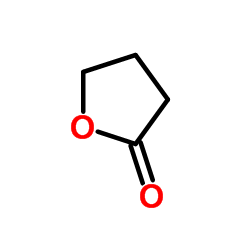
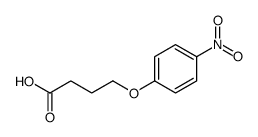
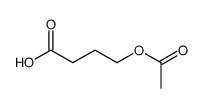 CAS#:26976-72-7
CAS#:26976-72-7 CAS#:591-81-1
CAS#:591-81-1 CAS#:10385-30-5
CAS#:10385-30-5![4-[bis(4-methoxyphenyl)-phenylmethoxy]butanoic acid structure](https://www.chemsrc.com/caspic/340/150907-74-7.png) CAS#:150907-74-7
CAS#:150907-74-7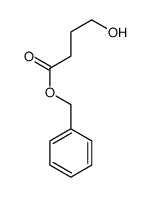 CAS#:91970-62-6
CAS#:91970-62-6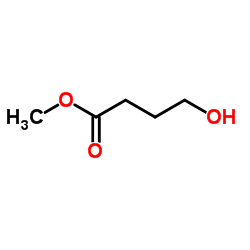 CAS#:925-57-5
CAS#:925-57-5